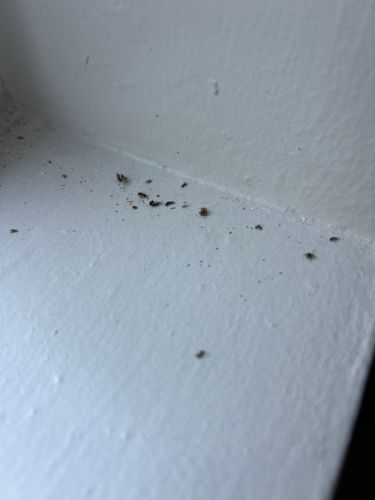Carpenter Ant
Scientific Name: Camponotus spp.
Order & Family: Hymenoptera: Formicidae
Size: Workers vary in size, typically ranging from 6 to 13 mm (0.25 to 0.5 inches).

Natural Habitat
Nests in wood, particularly if it is moist or decaying. Indoors, they are often found in wall voids, door and window frames, and insulation. Outdoors, they inhabit tree stumps, logs, and firewood piles.
Diet & Feeding
Omnivorous. Their diet consists of other insects, honeydew from aphids, plant juices, and household food items like sweets, fats, and meat. They do not eat wood but excavate it for nesting.
Behavior Patterns
Carpenter ants are social insects living in colonies. They excavate smooth, clean galleries in wood for their nests. A key sign of their presence is the sawdust-like shavings (frass) and insect parts they push out of their galleries, as seen in the image. They are most active at night when foraging for food and water.
Risks & Benefits
The primary risk is structural damage to homes and other wooden structures. Over time, their tunneling can weaken wood, compromising its integrity. They are not typically aggressive but can inflict a painful bite if their nest is disturbed. In a natural ecosystem, they are beneficial as they help in the decomposition of dead or felled trees.
Identified on: 11/6/2025